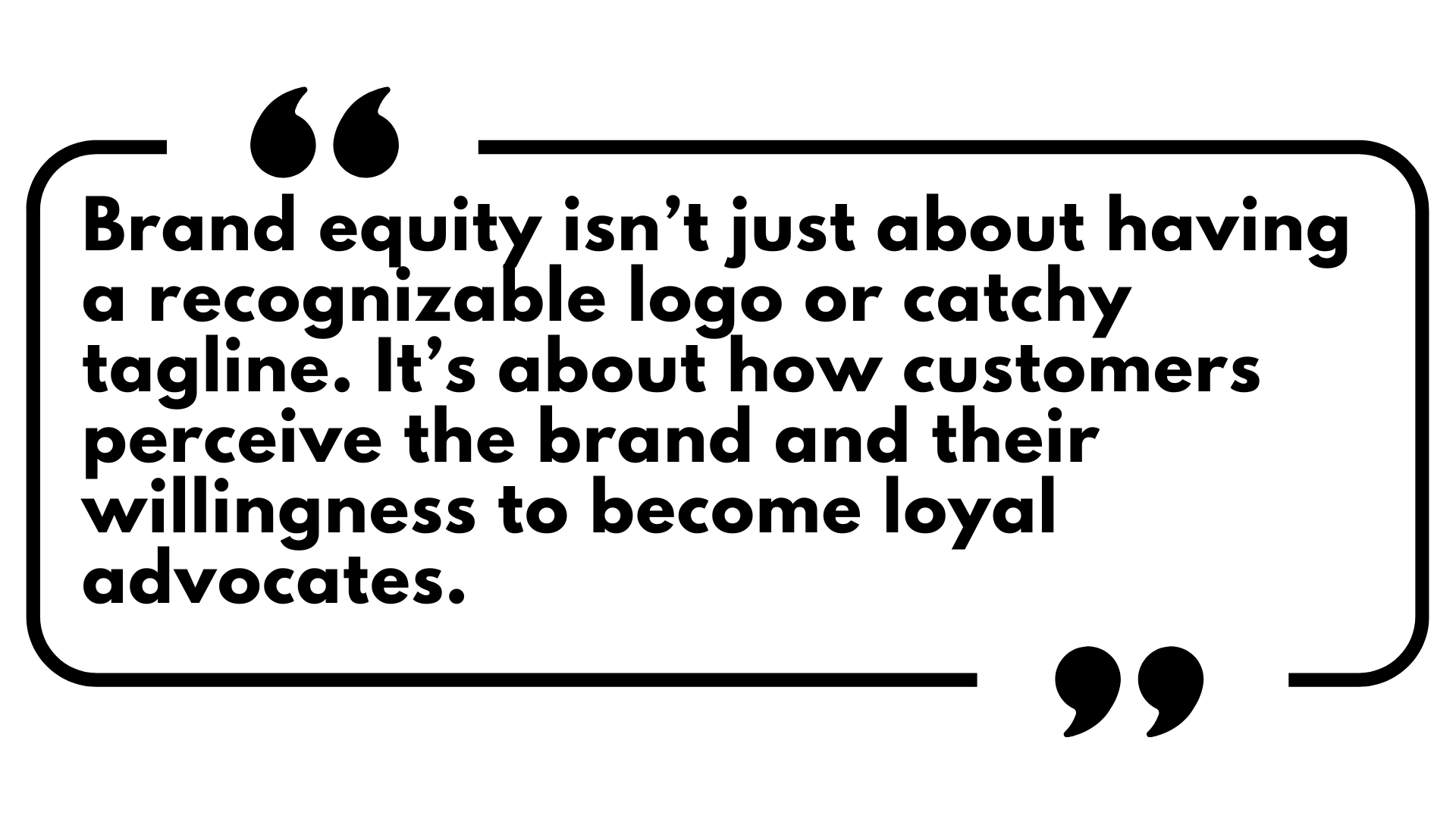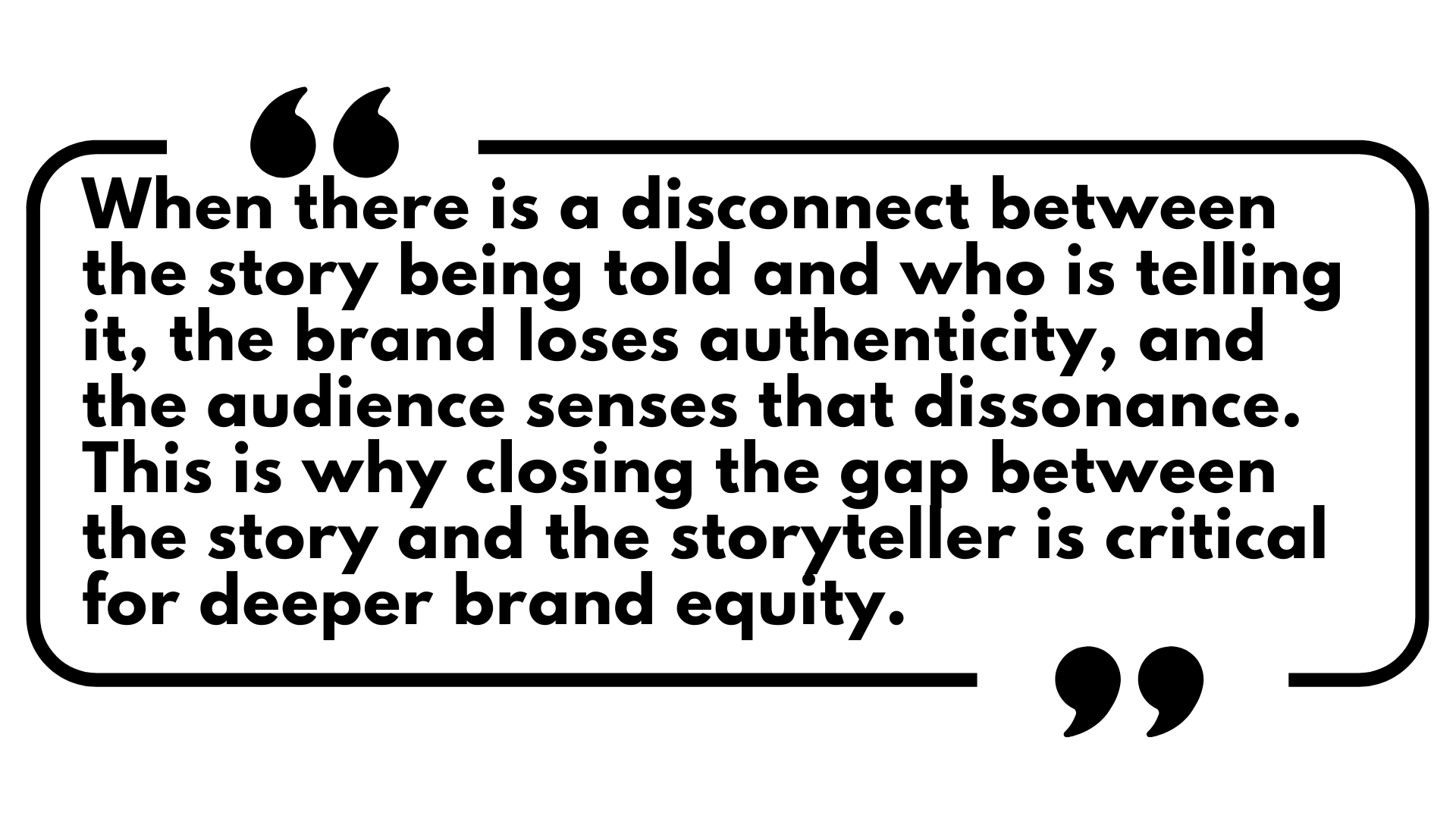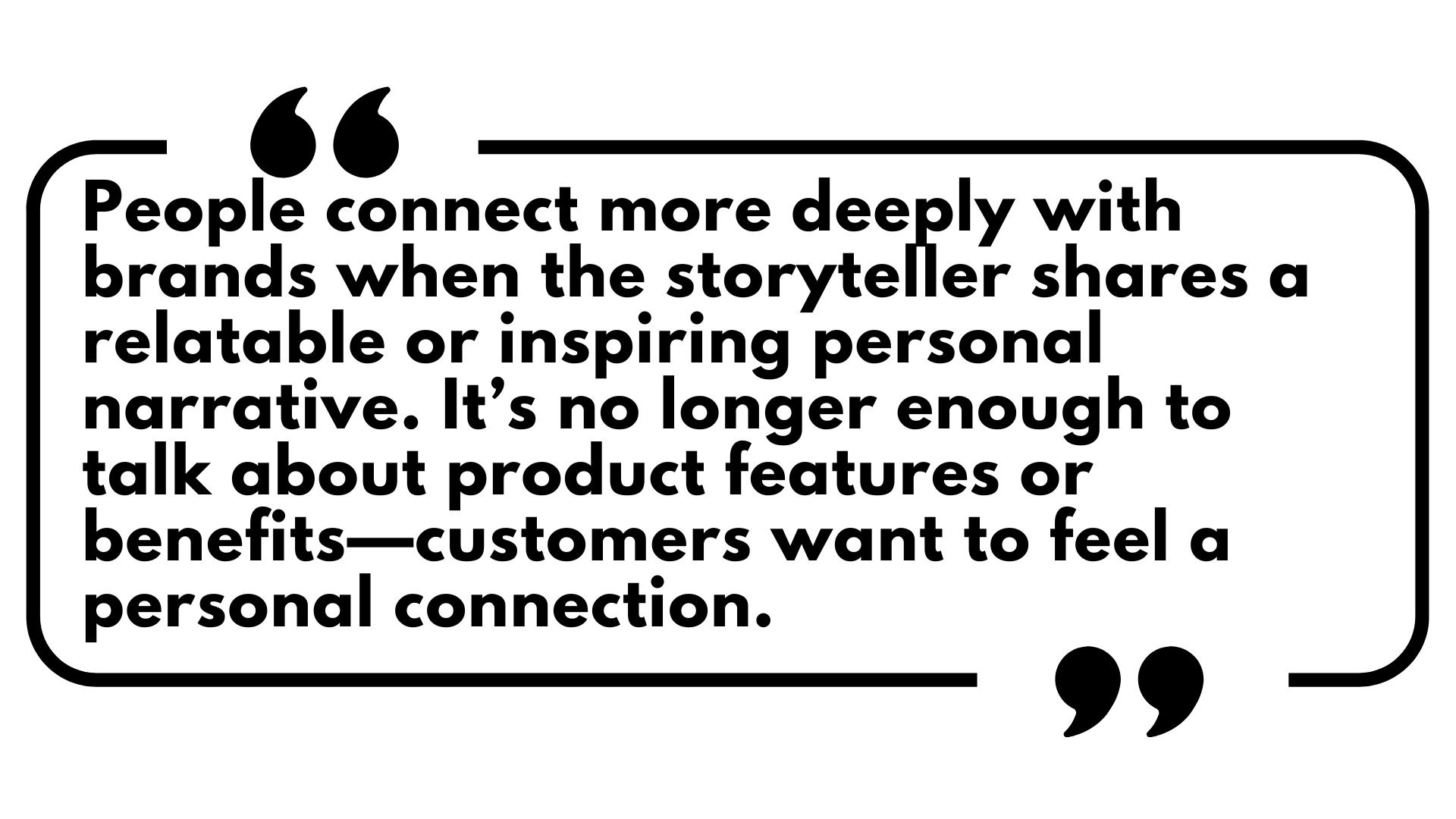
I feel happy to have been a part of this amazing digital evolution. Past 3 decades has been lot learning and past 10 years has been more of unlearning as well! My desire to stay relevant is one of my key drives. Considering the paradigm shift in how consumers consume content, brands must evolve beyond just offering superior products or services. They must connect with their audience on personal level keeping in mind individual personas as target. This connection is what builds and sustains brand equity—one of the most significant yet intangible assets for any organization.
If we take a moment to reflect, at the heart of brand equity, lies the synergy between the brand’s story and the storyteller. When brands effectively align their narrative with the person (or people) delivering it, they not only engage audiences but also build trust, loyalty, and long-term value. Moreover, in digital, omnichannel being a customer-centric approach in which all channels are integrated so the customer has a unified and consistent experience whether they are at a physical store, using an app, or on a website, is gaining deeper traction.

Before diving into the role of stories and storytellers, it’s important to first understand why brand equity is essential for C-suite leaders to measure and monitor:
Tangible Business Value: Strong brand equity translates directly into financial performance. A company with a positive brand image can command higher prices, experience stronger customer loyalty, and expand into new markets more successfully. It’s why organizations like Apple, Google, and Coca-Cola have outperformed competitors for decades—strong brand equity has become their moat.
Customer Loyalty and Advocacy: Brand equity isn’t just about having a recognizable logo or catchy tagline. It’s about how customers perceive the brand and their willingness to become loyal advocates. Brands with deep emotional connections with their customers are more resilient in the face of crises. For instance, during economic downturns, consumers are still willing to purchase from trusted brands that have become a part of their identity.
Competitive Differentiation: In a market flooded with options, a brand’s story can differentiate it from competitors. Strong brand equity helps build an identity that’s unique, memorable, and authentic. A brand’s story must resonate, making it stand out amid the noise, allowing customers to recognize and remember its value instantly.

Brands that achieve high levels of equity are often those where the story and storyteller are in perfect harmony. The storyteller could be anyone—from the brand’s founder to a celebrity ambassador or even a passionate customer. When there is a disconnect between the story being told and who is telling it, the brand loses authenticity, and the audience senses that dissonance. This is why closing the gap between the story and the storyteller is critical for deeper brand equity.
As per my observation, there are 3 broad reasons why the gap needs to be zero, and I will share those examples for easy context that most of our readers may already be aware of –
The best stories are those that are authentic, and the most authentic stories are told by people who live and breathe the brand’s values. A mismatch between the storyteller and the story can cause skepticism, leading to a loss of trust. In contrast, when the story comes from a genuine place, it resonates more deeply with the audience. Take Patagonia, for example. Its founder, Yvon Chouinard, has long been an environmental advocate, and his passion for sustainability is reflected in the company’s mission. Because the brand’s story aligns with the values and passion of its founder, customers feel that their purchases contribute to a greater cause.
For stories to stick, they must be consistent. Brands need to communicate their story across multiple touchpoints without losing their core message. If the storyteller wavers or contradicts the brand’s story, the brand risks confusion and erosion of trust. Nike is a perfect example of consistency. Its ‘Just Do It’ campaign has been a consistent narrative of perseverance and athleticism for over three decades. By aligning their story with athletes who embody that message—like Michael Jordan and Serena Williams—Nike has cemented its place as the go-to brand for those who aspire to greatness in sports. The alignment between the brand’s values and its storytellers has played a pivotal role in building deep-rooted loyalty.
People connect more deeply with brands when the storyteller shares a relatable or inspiring personal narrative. It’s no longer enough to talk about product features or benefits—customers want to feel a personal connection. When the storyteller exemplifies the brand’s core message in a human, relatable way, that connection becomes far stronger. Dove’s Real Beauty campaign is a prime example. By focusing on real women with real stories and rejecting the traditional portrayal of beauty, Dove’s storytellers became authentic advocates. This narrative shift from “perfect beauty” to “real beauty” resonated on a deeply emotional level, building a powerful emotional connection between the brand and its audience. Customers not only bought Dove products but also advocated for the brand’s message of self-confidence and empowerment.

So, how can brands ensure the gap between the story and the storyteller is zero?
Select Authentic Storytellers: Not every storyteller fits every brand. Brands must choose storytellers who genuinely represent their values, whether it’s a founder, an influencer, or even customers themselves. The key is to ensure that the story they tell aligns seamlessly with their own beliefs and experiences. In a nutshell, the storyteller needs to be a good mix of your Brand Custodian and the Brand Listener.
Craft a Relatable Narrative: The story should not only reflect the brand’s mission and values but also be relatable to the target audience. Whether the brand is discussing sustainability, innovation, or self-expression, the story needs to meet the customer where they are—emotionally and contextually.
Consistency Across Channels: The brand’s story should remain consistent, regardless of the platform. Whether it’s a social media post, a TV ad, or a public speech, the narrative should hold its integrity, and the storytellers should reflect that consistency. Misalignment across channels can dilute brand equity.
To conclude this piece, I’d say Storytelling as the Bedrock of Brand Equity. Ofcourse data is quintessential, however, this article I am focussing on the story and storyteller, so don’t thing that data is not important 😊
For C-suite leaders, understanding the dynamic between the brand’s story and its storyteller is crucial to building and maintaining brand equity. When the story and storyteller are aligned, the brand connects with its audience on a much deeper level, forging emotional ties that go beyond product features or services. I thank all my readers for making time to read.
Read More: How Brands Use Moment Marketing to Connect with Audiences: The Power of Timing